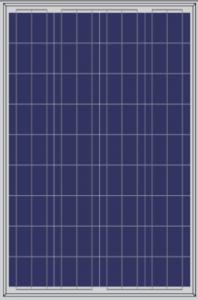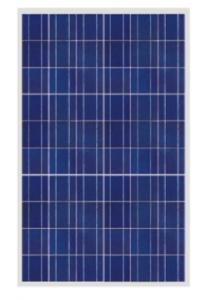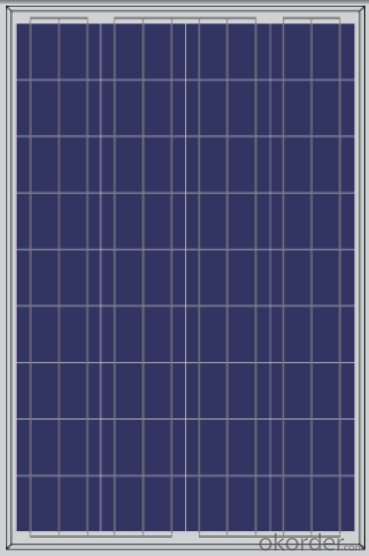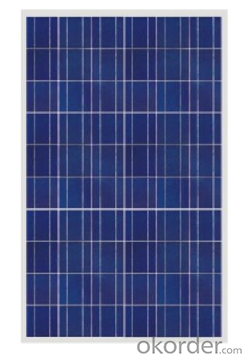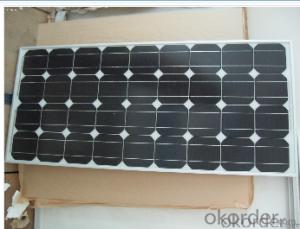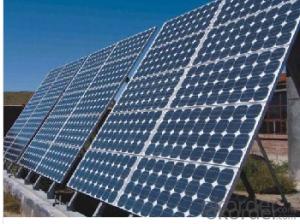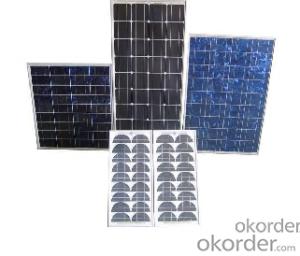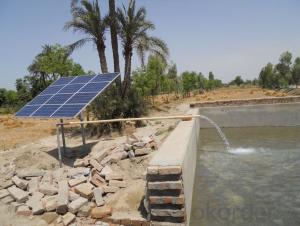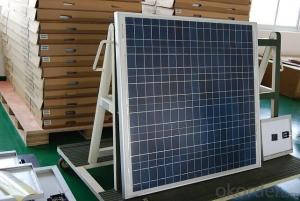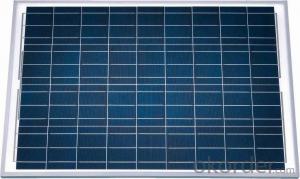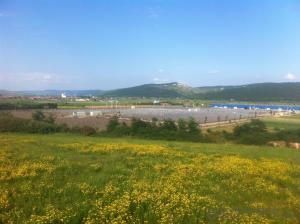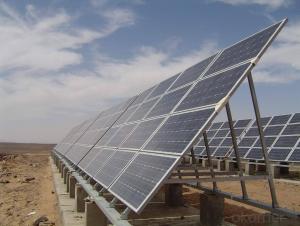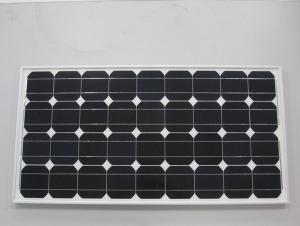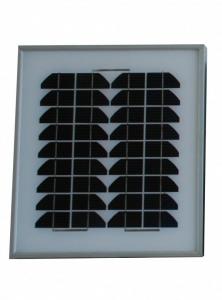Earth Solar Panels - Polycrystalline 156 Series from CNBM with Competitive Price
- Loading Port:
- Shanghai
- Payment Terms:
- TT OR LC
- Min Order Qty:
- 1 watt
- Supply Capability:
- 10000000 watt/month
OKorder Service Pledge
OKorder Financial Service
You Might Also Like
Description:
CNBM Solar is a world-leading and Vertical integrated manufacturer of high-performance with Silicon,
Wafer, Cells, Modules, which convert sunlight into electricity for residential, commercial, and utility-scale
power generation.
The capacity of CNBMSolar is reach to 1GW, and make sure each year our shipment capacity is more
Than 700-800MWs, at the same time, we have set up the largest solar power station with our partner
in Ukraine.
CNBM is a Quality + Service oriented company with“Excellence at Each Step” approach, composed of
the finest components from TUV and IEC-certified partners around the world, CNBM modules consistently
undergo a variety of trials at the company’s Test & Development Centre, ensuring peak performance
capabilities. The company is committed to develop and provide the world with clean and renewable energy
to ease the energy shortages as well as human kind’s impact on the environment.
Data:
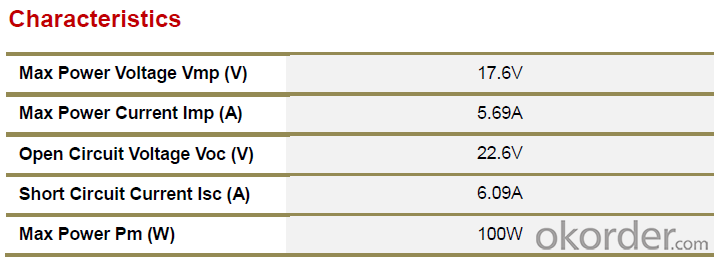
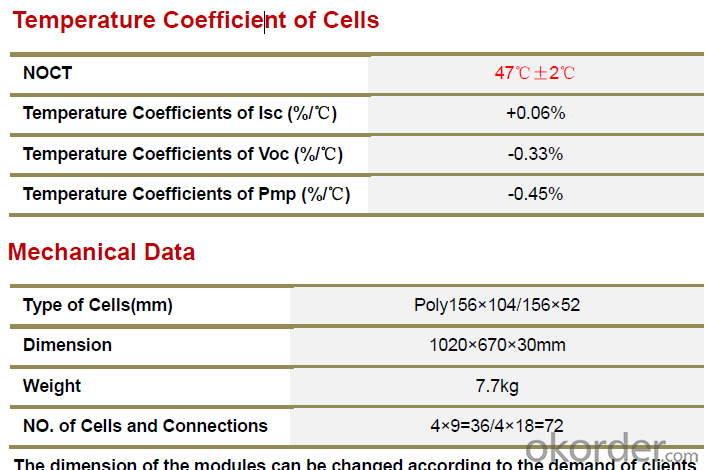
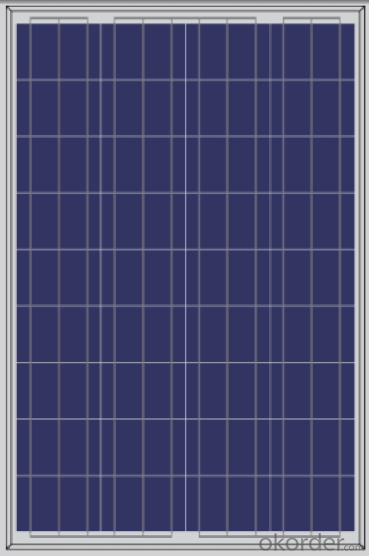
FAQ:What's your products warranty?
No less than 90% within 10yrs and no less
than 80% within 25yrs
- Q: My mom's house has some solar power panels on the top of her house but they are not connected to anything. They don't even have wires or anything like that. Does anyone know how to connect and make solar panels work? Thank You
- They may be connected and running, but you just can't see the cables because they are concealed. Of they may not even be electric. They may be solar water heaters that have water lines running inside a black box. Did your mom purchase the house with them on there? If so, can she contact the previous owner to learn who installed them and why? In the absence of any meaningful information, I would suggest that you call a solar company in your area and have them come out to tell you what it is that you have.
- Q: Why can't they put solar-panels on the blades and sides of the 300-500 foot tall turbines? Wouldn't this increase effeciency? Therefore, boosting pay-back time, profits, energy-output?
- Good to know someone is thinking and coming up with original ideas, so thanks for contributing... Put a large powerful solar collector on the end of the turbine too i.e. facing the sky! Far as I know, solar works on day-light (doesn't have to face the sun). So your idea is not to be put down. Metal blade turbines - are heavy - wooden windmills - heavy... so some added weight to the wind-turbine's paddles would be OK robably. Great if solar device not made of glass (so unbreakable). I think panels on the roof are old hat...
- Q: I have a 20 watt solar panel that I want to set up. I need to connect it to the solar controller but do not know what cable to use. I plan on adding more solar panels down the line. What would be the best cable to use?
- on the controller, it writes which would be related with image voltaic panel which would be related with battery which would be related with load all of it write on the image voltaic controller. only see the controller
- Q: How do solar panels affect the electrical grid?
- Solar panels can have both positive and negative impacts on the electrical grid. On the positive side, solar panels help to reduce the demand for electricity from the grid, especially during peak hours when electricity is most expensive. This can lead to cost savings for the grid and reduce the need for additional power plants. Additionally, solar panels generate clean, renewable energy, which helps to reduce greenhouse gas emissions and combat climate change. However, the intermittent nature of solar power can pose challenges to grid stability and reliability. Fluctuations in solar energy production can create imbalances in supply and demand, requiring grid operators to carefully manage and integrate solar power into the system. Overall, solar panels can be a valuable addition to the electrical grid, but their integration requires careful planning and management.
- Q: will at least consider them for their home electricity? I've seen several articles that new technologies are now being used, but it doesn't seem to be promoted to residential apps. I've even seen that the solar technology will be used in paints in the near future.
- I know 4 families that not only power their entire homes with their panels (including their AC during the summer), they contribute electricity to the grid and have a negative electric bill. They also got a big rebate from our local electric company, SoCal Edison, for installing the panels. Maybe the worthiness of solar panels depends on how many days of sun the roof of your home gets during the year.
- Q: I want to make 2V 4.5A solar panel to charge my battery used in my RC car project. I just like to know how should I amplify the current for 4.5A. I need the total circuit diagram. Can anyone help me. Please. I need some affordable methods please.
- Have okorder / . It could obviously explain everybody!
- Q: Exactly How much power will this kit produce? for example. Will it only be able to power the 2 light throughout an entire day or would it be able to power a couple TV's with a couple lights. Or a Refrigerator? washer dryer? I'm just wondering exactly what it will be able to do and if it's worth paying $200 for if it'll only power two lights. Don't get me wrong, That's great and will make a difference but i'm looking for something that will make a little bit of a bigger difference. Would the 80 watt monocrystalline solar panel be much better? if so, what would it be able to power? double?
- I don't have direct experience with the Harbor Freight panels, but have heard that they are agressively rated - i.e., the three 5-watt panels are really 5-watt panels. The 80-watt panel is likely to be a serious panel, rated according to standard test conditions. It will also be more durable, and probably have a warranty of 20 years or more. There's really no comparison. If your goal is to experiment with solar electricity, then get the kit from Harbor Freight (or Northern Tool, or any of a handful of other places). If your goal is to save money, generally you will need a larger scale than 80 watts - several thousand watts being the norm. And the payback time will be measured in years.
- Q: If a solar panel is a .5kW system, what length of time is it putting out that much power? Every hour?
- Solar panels are rated under standard test conditions (STC), a certain amount of light at a certain distance, at a certain temperature, etc. A kW, or kilo watt, is 000 watts. So for the amount of time that the sun meets those conditions, the rate of output is 500 watts. An average location has an average of 5 sun hours a day, the total time that you produce the rated output. Watts is a rate, like miles per hour (mph), how fast it is going. Watt hours, or kilo watt hours (kwh) is a quantity, like miles. So if you drive 50 mph for 5 hours, you went 250 miles (50 mph x 5 hours). If you produce .5kw for 5 hours, you have the potential to produce 7.5kwh a day. Multiply that by 30 days in a month, you get 225kwh a month. In reality you will lose about 30% of the rated power from less than ideal weather, system losses, etc., so it's more like 50kwh a month. You can look at your electric bill to see how many kwh you use a month, maybe around 000kwh, and see what percentage of your usage a system like that can power.
- Q: Monocrystalline panels are sooo expensive! Thanks for reading.
- Since you are asking for a rather technical answer you should be aware that solar panels come in several varieties. Two broad categories are photovoltaic panels which have achieved marketable efficiencies of around 24% and solar thermal panels which are routinely achieving efficiencies of between 60 to 80% while they are also much cheaper than photovoltaic panels. So the short answer is solar thermal panels. But what can you do with solar thermal energy. The answer is just about everything you can do with light energy. Sometimes additional equipment makes the efficiency drop to near that of photovoltaic panels. The trick is to keep the devices as simple and as efficient as possible. Solar thermal can of course be used to heat our homes. But it can also be used directly for air conditioning. The type of air conditioner uses a slightly different principal but it is one of the oldest that was once used in ice houses before refrigerators. It is known as an absorption system. At some point you may want to make electricity from the sun's heat. The most efficient commercial systems are not photovoltaic but solar thermal. There are several commercial systems where increased scale improves efficiency. The most efficient is a solar parabolic dish system combined with a stirling engine. At around 30% efficiency it beats photovoltaic and other thermal systems. At this level of commercial development, the various systems are more often described as solar collectors rather than panels.
- Q: Can solar panels be used for powering agricultural irrigation systems?
- Yes, solar panels can be used to power agricultural irrigation systems. Solar-powered irrigation systems are increasingly being used in agriculture as they provide a sustainable and cost-effective solution. Solar panels convert sunlight into electricity, which can then be used to power pumps and other irrigation equipment, reducing reliance on fossil fuels and electricity grids. This approach helps farmers save on energy costs and reduces their carbon footprint.
Send your message to us
Earth Solar Panels - Polycrystalline 156 Series from CNBM with Competitive Price
- Loading Port:
- Shanghai
- Payment Terms:
- TT OR LC
- Min Order Qty:
- 1 watt
- Supply Capability:
- 10000000 watt/month
OKorder Service Pledge
OKorder Financial Service
Similar products
Hot products
Hot Searches
Related keywords
